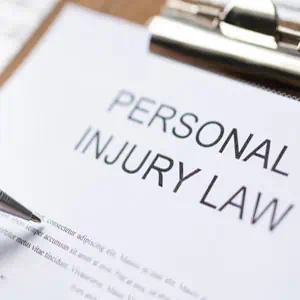The following article will cover:
 With over 20 years of practice, I bring to bear extensive experience in a variety of cases, including employment and construction defects. However, my principal emphasis lies in personal injury law. From trial to appellate work, my experience encompasses all stages of litigation.
With over 20 years of practice, I bring to bear extensive experience in a variety of cases, including employment and construction defects. However, my principal emphasis lies in personal injury law. From trial to appellate work, my experience encompasses all stages of litigation.
Often, the queries I encounter revolve around understanding the basic process. Typically, our first interaction with a client encompasses a discussion about insurance procedures as these come into play first during the claim process.
Currently, I am handling several cases at this stage. This phase can be time-consuming, given the need for gathering extensive information and presenting a demand for settlement, in an effort to avoid litigation. Following this, I explain the litigation process, its possibilities and limitations, and the functioning of related rules.
The beginning of the claims process typically begins when a client reaches out to us. We then prepare a demand package that informs the insurance company of the claim and the level of compensation sought.
The next step includes filing a claim with either your own insurance company or the at-fault party's insurer. Subsequently, our law firm takes on the responsibility of gathering necessary information, preparing the demand, and exploring the possibility of reaching a settlement.
Primarily, insurance companies scrutinize medical bills, attempting to suggest that certain treatments were unnecessary or excessive, particularly in instances of perceived over-treatment. Another common tactic is to assert that the injury sustained was not significant enough to warrant the claim, regardless of substantial emergency room bills.
For instance, if you underwent physical therapy for a few months following an ER visit, they might argue that the injury wasn’t severe enough to warrant that much treatment. Consequently, they might maintain they don't need to pay as much, asserting you had already made a recovery.
If you're unable to reach a satisfactory settlement following negotiations, the next step is to file a lawsuit. This process can be time-consuming – and for claims below a certain threshold, mandatory arbitration might be required. Of course, while arbitration could lead to a quick and straightforward resolution, it does come with the drawback of potential appeals from the other side.
If you don't pursue arbitration and instead file a superior court claim, the process shifts to ongoing negotiations, completing discovery, and gathering necessary information to proceed toward trial. At a certain stage, the court may mandate an alternative dispute resolution, typically through mediation. While mediation might not guarantee resolution on the same day, it tends to have a high success rate within a week of the mediation session.
The answer to this question largely depends on the person and the specifics of the situation. If your claim is straightforward and low in value, lacking complexities or substantial damages, you might not need to hire an attorney.
However, if your case involves complexities, prolonged medical treatment beyond a few months, or significant damages, it's advisable to engage an attorney. Furthermore, if you're uncomfortable with negotiations or determining the value of your claim, consulting with an attorney can be very beneficial. For more information on Filing A Personal Injury Claim In Washington, an initial consultation is your next best step.
Call Now To Schedule Your Consultation